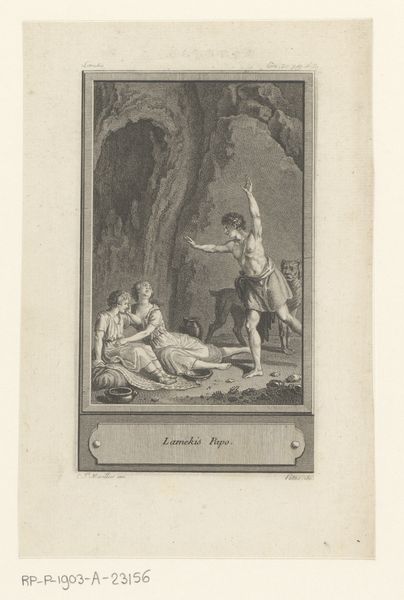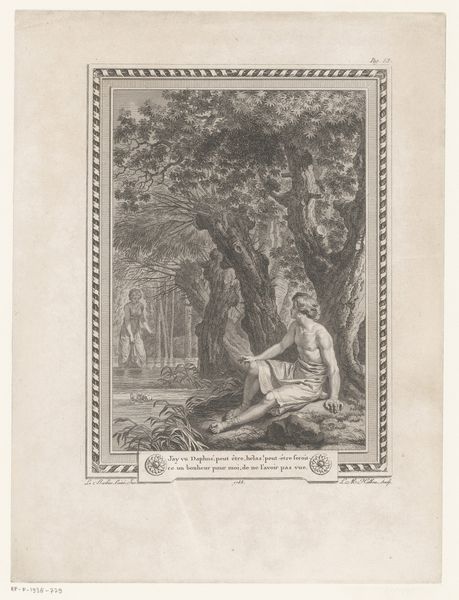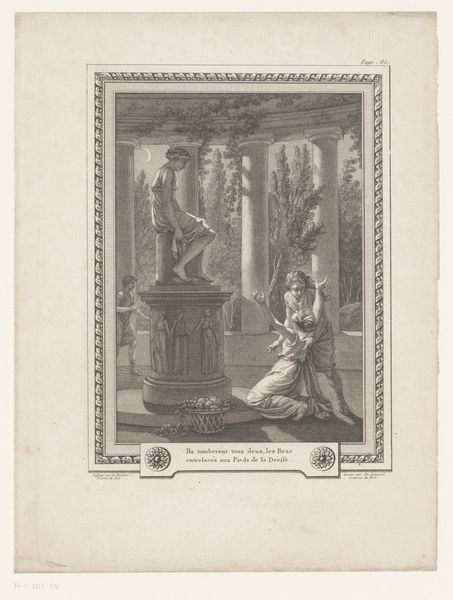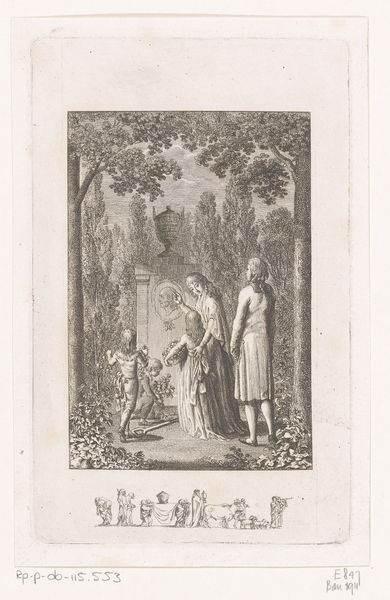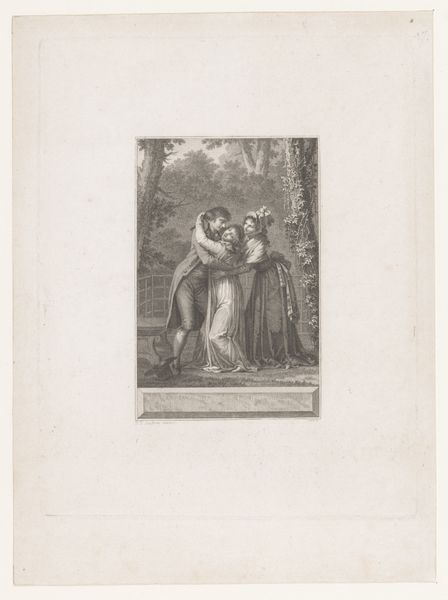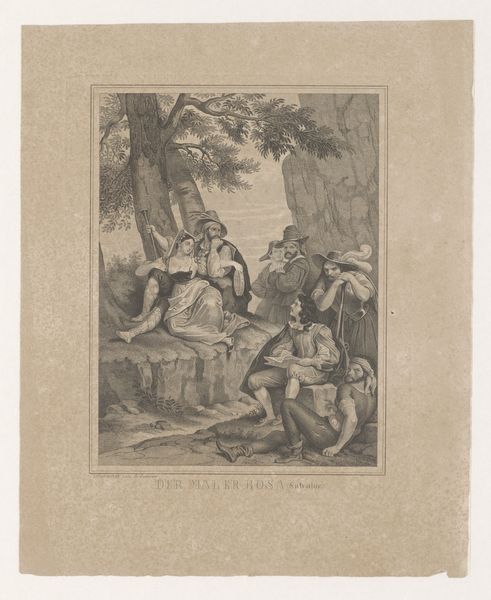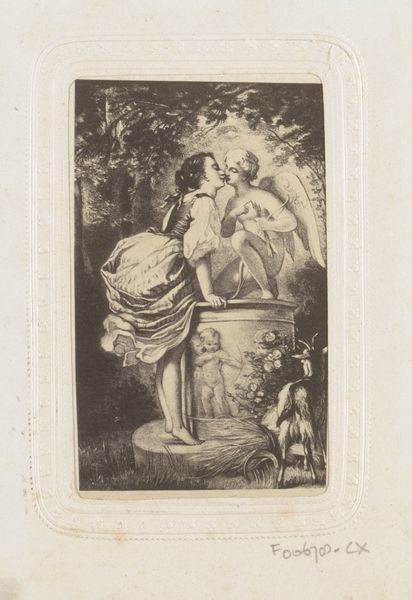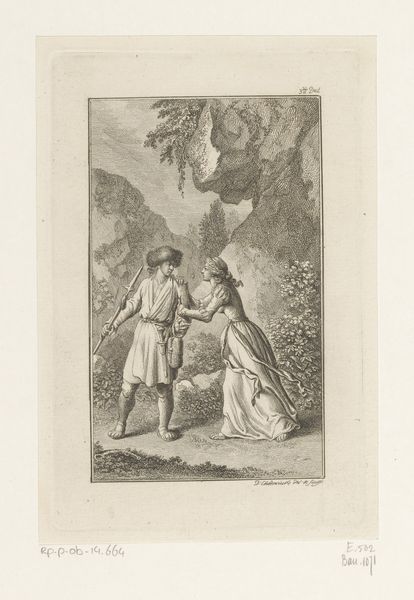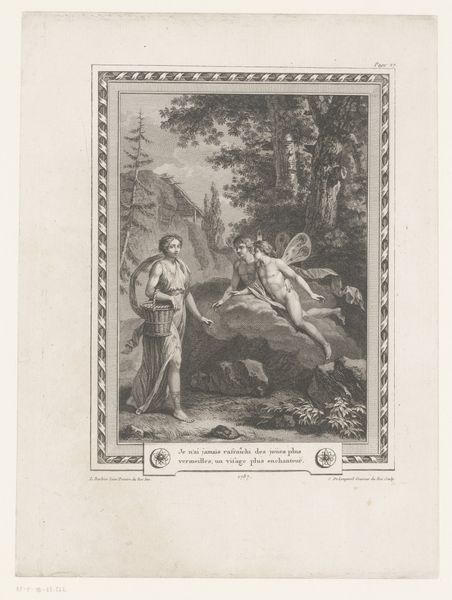
Dimensions: height 276 mm, width 208 mm
Copyright: Rijks Museum: Open Domain
Editor: This is "Two Men Before the Ruins of a Gate," an etching, engraving and line drawing by Joseph de Longueil, created sometime between 1740 and 1792. I find the composition intriguing, with the figures framed by both natural overgrowth and architectural decay. What compositional elements stand out to you? Curator: Immediately, the strong diagonal line established by the gesturing figure draws the eye, directing it towards the darkness within the ruined archway. Note the meticulous layering: figures, foliage, and fragmented architecture, each plane rendered with contrasting degrees of detail to create depth. Editor: I see that! The archway also has a different texture to the foliage and figures, much more rigid. What do you make of the frieze above the arch? Curator: Precisely. The frieze presents another layer of meaning through depicted movement, yet is static within the whole. Consider the stark contrast between the wild, untamed nature reclaiming the structure, and the rigid, classical narrative frozen in stone above. Notice the deliberate arrangement: light and shadow play across the scene, guiding our perception. How do you feel it functions here? Editor: It certainly emphasizes the dramatic contrast between the natural world and the constructed, almost as if time itself is a character in the artwork, working to undo the figures in the frieze! It highlights the ephemeral nature of human achievement. Curator: A perspicacious observation. Indeed, the very linearity of the etched lines contributes to a sense of structured disintegration. Are there other compositional techniques we may be overlooking? Editor: Looking closely, the border of the work itself uses detailed, repeating lines that reflect the tension within the ruin between rigidity and organic texture. I initially overlooked its framing effect, and thought it to be an affectation. Thank you for your insight into de Longueil's masterful use of contrast! Curator: And thank you for yours. The beauty of formalism is discovering new elements to decode.
Comments
No comments
Be the first to comment and join the conversation on the ultimate creative platform.

